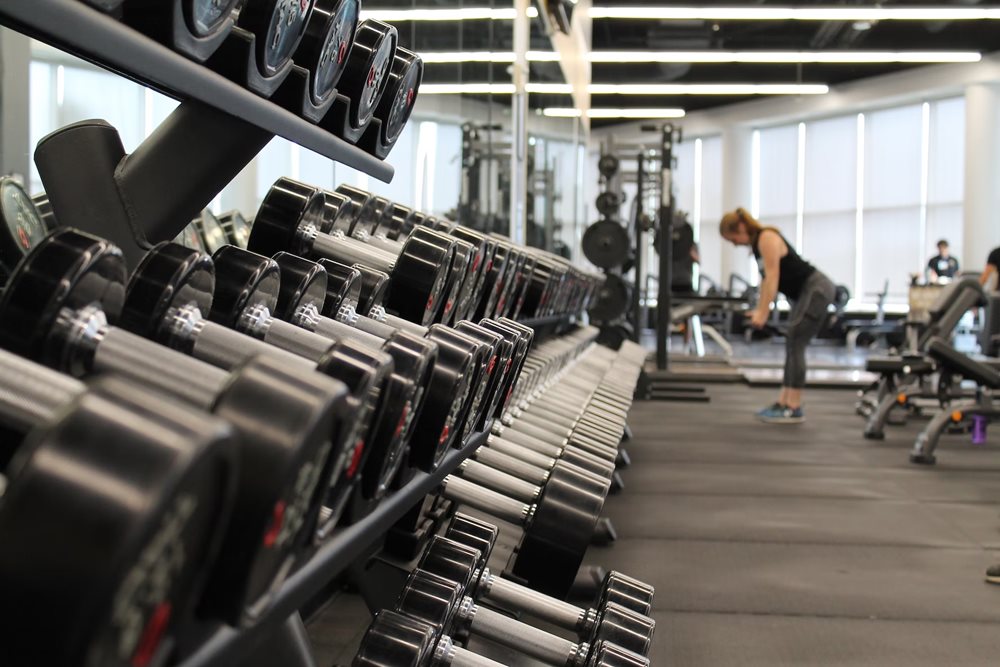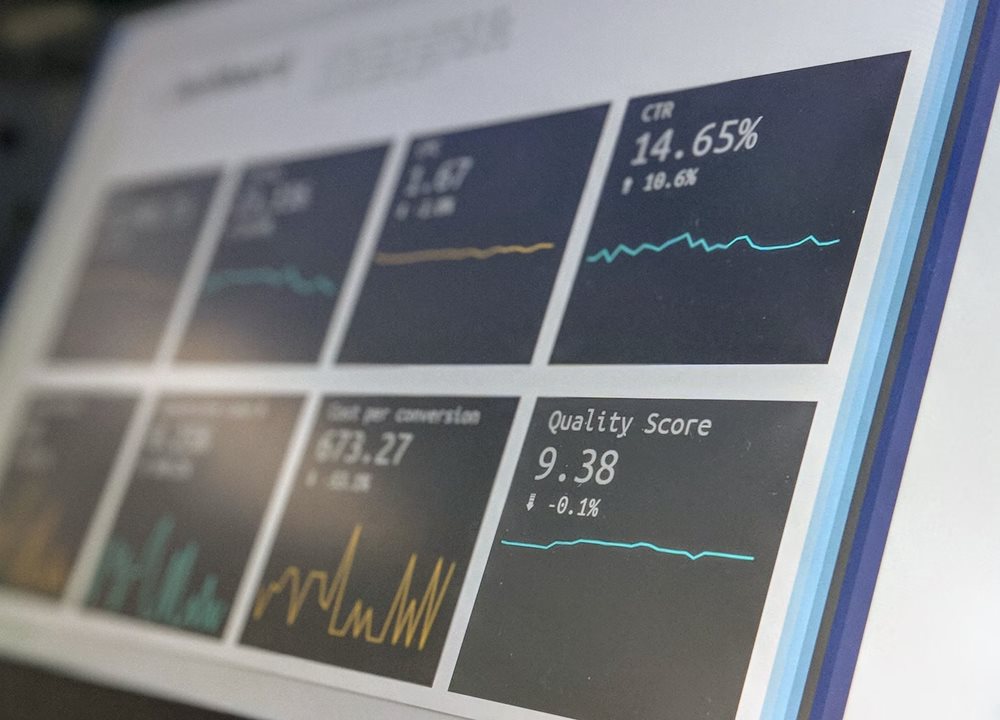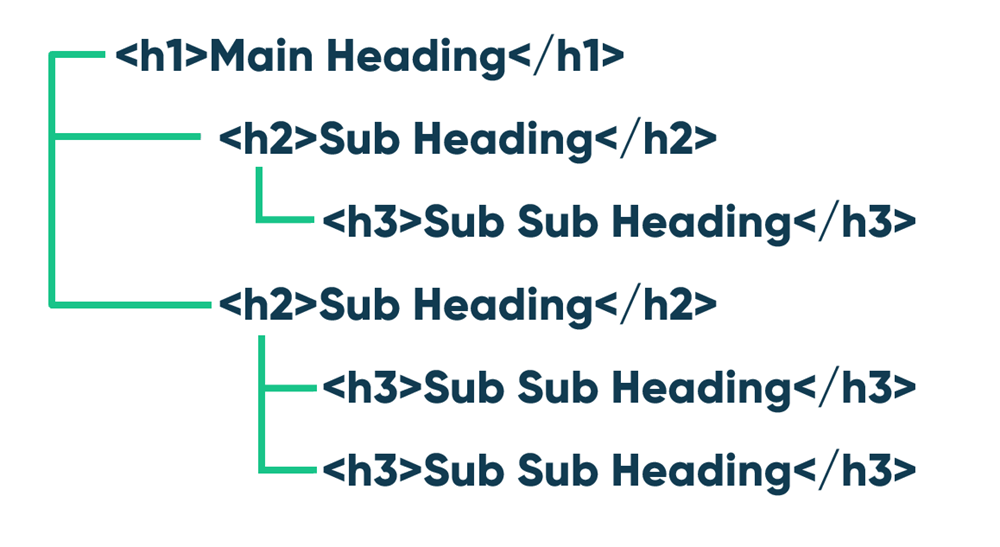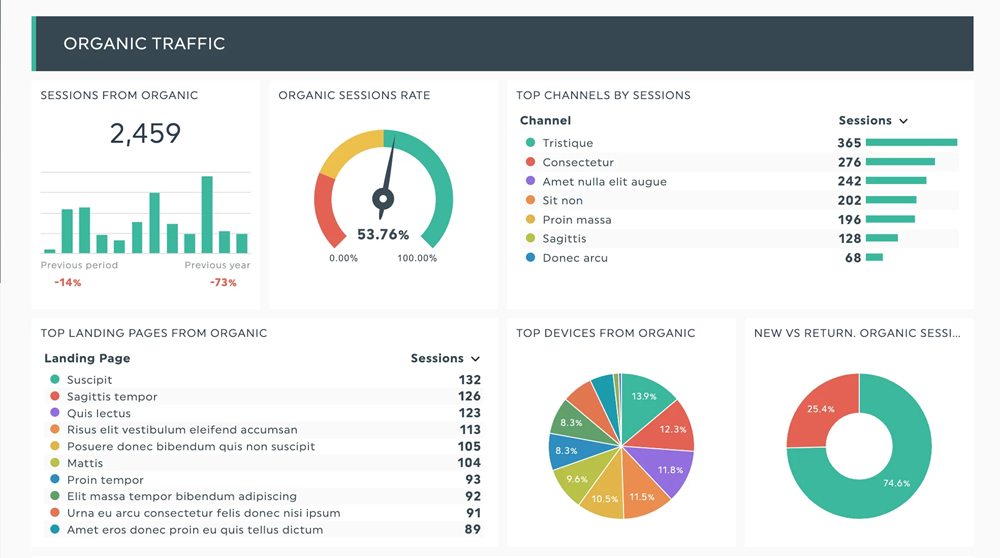- 1. What Is SEO And How Can It Help Gyms?
- 2. How To Optimize Your Gym Website For SEO
- 3. Keyword Research For Gyms
- 4. Crafting Compelling Content For Gyms
- 5. Search Engine-Friendly URLs For Gyms
- 6. Structuring Your Gym Website To Maximize Seo
- 7. Utilize Header Tags
- 8. Image Optimization For SEO
- 9. Monitoring And Measuring SEO Performance
- 10. Local SEO Strategies For Gyms
- 11. Reputation Management Strategies For Gyms
- 12. Leveraging Social Media For SEO
- 13. Closing Remarks
- 14. Frequently Asked Questions on Fitness SEO
SEO is a powerful tool for gyms to increase visibility and grow their client base. By using targeted keywords, link building, and other tactics, gyms can stand out in a crowded marketplace.
This article provides actionable strategies, including keyword research, website optimization, backlinks, competitor analysis, and performance tracking.
By implementing these strategies, gym owners can improve search engine rankings, attract potential customers, and boost revenue growth for long-term success.
1. What Is SEO And How Can It Help Gyms?
SEO is the process of improving website visibility and traffic by optimizing organic search results through an algorithmic understanding of search engines like Google.
For gyms, this means applying best practices such as optimizing titles and descriptions, responding to reviews, creating authoritative backlinks and using relevant keywords to increase online visibility for customers searching for gyms.

By investing in SEO, gyms can expand their digital reach, improve rankings, and provide valuable content for visitors seeking information about fitness centers. Keeping up with best practices and algorithmic changes over time is crucial for maintaining successful SEO strategies.
Implementing a strong SEO strategy is essential for gyms and fitness businesses looking to attract local clients and stand out online. Investing in affordable SEO services can help fitness brands improve their search rankings, drive organic traffic, and increase membership sign-ups without breaking the budget. With the right approach, even small gyms can compete with larger chains in the digital space.
2. How To Optimize Your Gym Website For SEO

Optimizing a gym website for SEO is crucial to attracting new customers and increasing online visibility.
This involves using specific techniques and strategies such as mapping strategic keywords on unique pages, adding meta tags, image descriptions, or alt tags, and creating relevant backlinks to improve search engine rankings. Additionally, having a responsive design layout is important for mobile users.
The first step towards optimizing a gym or fitness website is doing keyword research. Keyword research should be done on the understanding of services provided by the gym or studio. For example, if the gym provides personal training and is based in New York then keywords like Personal Trainer New York, Personal Training New York, and Personal Trainer NYC are the relevant keywords.

Next focus could be on keyword mapping and creating a content strategy based on the services provided. Each keyword discovered may fall into a bucket of intent either Informational, Navigational, or Transactional. Based on the intent content should be created accordingly.
Examples of intent with keywords and page type:
| Intent Type | Keyword Example | Type of Page Needed |
| Informational | Why join a gym | Blog (Long-Form Content) |
| Informational | Benefits of yoga | Resource Page |
| Informational | Workout routine for beginners | Blog (Listicle Format) |
| Navigational | Best gyms near me | Location Page |
| Navigational | Class schedule for [gym/studio name] | Class Schedule Page |
| Navigational | Personal training [gym/studio name] | Personal Training Page |
| Transactional | Sign up for gym membership | Membership Page |
| Transactional | Buy [fitness product] online | Product Page |
| Transactional | Book fitness class | Class Booking Page |
3. Keyword Research For Gyms

Keyword research is an important component. It involves uncovering the best search terms and phrases that people use when looking for fitness centers online. Knowing which keywords to target helps gym owners create more effective content and website optimization strategies.
To begin with, try using a tool like Google Keyword Planner or Ahrefs (Paid) to find relevant keywords related to your gym’s services. Consider long-tail keywords, if your gym has women-only then you may use “women-only weightlifting classes in [your city].”
Including geographic information can help you reach local customers who are searching for specific services near them. Additionally, analyzing competitor websites can give you insight into what they're doing right—and wrong—so you can adjust your own strategy accordingly.
Once you've identified potential keywords, take time to assess their search volume and competitiveness level before making any decisions about targeting those words on your website.
Higher competition usually means lower rankings, so consider focusing on less popular but still relevant topics instead of going straight for the most searched terms. With proper keyword research in place, your gym's SEO efforts will be much more successful over time.
According to TeamUp, a gym software, by conducting keyword research, gym owners can identify the specific terms and phrases that their potential members are searching for online. This information can then be used to create targeted content, such as blog posts and landing pages, that will help their website rank higher in search engine results pages.
3.1 Tools For Keyword Research
| Tool Name | Paid/Free | Price in $US | Where to Sign Up |
| Google Keyword Planner | Free | N/A | https://ads.google.com/intl/en_ca/home/tools/keyword-planner/ |
| Ahrefs Keywords Explorer | Paid | Starts at $89/month | https://ahrefs.com/keywords-explorer |
| SEMrush Keyword Research | Paid | Starts at $119.95/month | https://www.semrush.com/features/keyword-research/ |
| Moz Keyword Explorer | Paid | Starts at $79/month | https://moz.com/explorer |
| Keyword Tool | Paid | Starts at $79/month | https://keywordtool.io/pro#pricing |
| Ubersuggest | Paid/Free | Free plan available, paid plans start at $29/month | https://app.neilpatel.com/en/pricing |
| SpyFu | Paid | Starts at $16/month | https://www.spyfu.com/mainpurchase/ |
| SERPstat | Paid | Starts at $55/month | https://serpstat.com/prices/ |
| Long Tail Pro | Paid | Starts at $59.99/month | https://longtailpro.com/pricing/ |
| KWFinder | Paid | Starts at $29.90/month | https://kwfinder.com/plans-and-pricing |
4. Crafting Compelling Content For Gyms

Content should be informative and engaging, with a few key elements in order to maximize visibility.
Each content must include keywords that are relevant to your gym's services or products. These keywords will help search engine algorithms determine what topics you specialize in.
All content should contain links within it so readers can easily access more information on related topics.
Finally, including visuals such as images or videos will make the page appear more interesting and appealing.
The most important factor when creating effective SEO-focused content for gyms is providing value. This could mean offering helpful tips about fitness activities or teaching proper form for lifting weights safely.
It may also involve giving an overview of different types of equipment available at your gym or discussing how members can get involved in events or clubs onsite. Ultimately, all content should aim to provide useful information that keeps visitors coming back for more.
5. Search Engine-Friendly URLs For Gyms
Search engine-friendly URLs are an essential element of SEO for gyms. When optimized correctly, they can help create easy-to-understand pathways that lead users directly to a gym's website and content. The following guidelines will aid in the development of search-friendly URLs:
- Keep them short and descriptive;
- Avoid using underscores instead of hyphens;
- Use relevant keywords whenever possible.
For example, if you own a gym called “Muscle Max Gym”, then you should use something like www.musclemaxgym.com/weights as opposed to www.musclemaxgym.com/weight_training or similar variations with unwanted characters in the URL string.
It is also important not to stuff unnecessary keywords into your URLs - this could cause confusion amongst both visitors and search engines alike, leading to lower rankings in SERPs (search engine result pages).
Additionally, make sure any redirects don't 'leak' link equity from one page to another by using 301 redirects instead of 302 redirects where applicable - thereby ensuring maximum power for SEO for gyms!
6. Structuring Your Gym Website To Maximize Seo
Structuring your gym website to maximize SEO is an important factor in getting the right traffic. When done correctly, it can help a business reach more customers and increase its online presence. To make sure that this happens successfully, there are a few steps to consider:
Create search engine-friendly URLs for each page on the website. This will help potential customers find exactly what they're looking for without having to sift through unnecessary content.
Use keyword research tools such as Google Trends, Ubersuggest, or other Google Trends alternatives to determine which keywords would be most beneficial when creating web pages and titles.
Optimize meta descriptions with strong calls-to-action so visitors have the incentive to click on the link after seeing it in search results pages.
It's also important to stay up-to-date with best practices for SEO optimization by staying informed about new developments in technology and algorithms used by major search engines like Google and Bing. Some best sources to be updated on SEO include:
7. Utilize Header Tags

Header tags are HTML elements that provide structure and hierarchy to a page's content, making it easier for visitors to navigate through a page as well as helping search engines understand its purpose.
Header tags come in various sizes known as H1, H2, H3, etc., where the higher number indicates a smaller heading size.
For example, when creating SEO on-page content for gyms, using the H2 tag with targeted keywords can boost visibility on both organic and paid searches.
Furthermore, proper usage of these tags not only makes it easier for crawlers to index information but also helps readers quickly identify what they’re looking for on the page.
8. Image Optimization For SEO

According to a study by Moz, images are the second most important factor in determining search engine rankings. This means that optimizing your images can have a significant impact on your website's SEO.
Image optimization plays an important role in Search Engine Optimization (SEO) for gyms. It is essential to optimize images correctly so that they are seen as helpful by search engines since the visuals can be powerful when it comes to giving a website credibility and improving its visibility online.
When optimizing images for SEO, there are several things you’d need to take care of:
- Descriptive File Names: Make sure to use descriptive file names with relevant keywords incorporated within them; this will help improve indexing and rankings on Google Images.
- File Format: Use various image formats such as JPEGs or PNGs depending on what type of image you’re using. Bonus tip - If you are using WordPress then have a plugin that changes any image format to WebP. This will help a lot in how fast your web page loads.
- Image Size: Also consider reducing the size of your images without sacrificing quality; this helps speed up page loading times which is beneficial for SEO purposes.
- Image Alt Tags: Finally, don’t forget to include alt tags with descriptions that accurately describe the content featured in each image – this improves accessibility and allows people who rely on screen readers to easily understand what’s being shown on the page.
9. Monitoring And Measuring SEO Performance

Through monitoring and measurement, gym owners can track their website’s rankings on search engine results pages (SERPs) to determine the effectiveness of optimization techniques like keyword research, content creation, link building, and more.
Analytics tools like Google Analytics or SEMrush offer insight into organic reach as well as competitor analysis so that marketers can make informed decisions about how to optimize their websites.
To maximize SEO success, it is important to establish goals or key performance indicators a.k.a KPIs beforehand and then regularly assess progress against these objectives over time with comprehensive performance reviews.
This should involve tracking both short-term metrics such as page views and click-through rates, as well as long-term indicators including conversion rate optimization (CRO).
Understanding user behavior helps inform further strategies for improving SERP ranking – from optimizing titles and meta descriptions to creating enticing internal links between web pages. By taking a data-driven approach to SEO management in this way, gyms are able to ensure maximum visibility online.
10. Local SEO Strategies For Gyms

Local SEO involves optimizing a website and other online presence elements, such as google business pages (previously knowns as GMBs) with location-based keywords or phrases so that potential customers can quickly find the gym when searching for related terms.
This optimization helps improve visibility on both local map listings and organic search results within geographical areas specified by the business.
When setting up an effective local SEO strategy, it's important to consider factors such as keyword research, content creation, reviews management, link building, and directory listing.
Each of these components helps increase the relevance of searches containing your target location or area; furthermore, they will help boost a gym’s overall rankings in localized organic search results.
For example, creating content about topics relevant to the area where the gym is located and including targeted keywords can be highly beneficial for increasing traffic from people who use those specific words or phrases while searching locally.
Additionally, leveraging positive customer reviews should also be part of any successful local SEO plan since this type of feedback can have great impact on user perception of quality and trustworthiness which can ultimately lead to more visits.
11. Reputation Management Strategies For Gyms
The success of a gym, regardless of its size, heavily relies on its reputation within the community and among potential customers. To attract new members and maintain loyalty, it's essential to establish an effective online reputation management strategy.
Creating brand-focused content is key to building a positive reputation with existing and potential customers. Consistently maintaining active social media accounts and posting informative blog articles about your services and industry trends can help.
It's also important to leverage online review platforms, such as Yelp or Google Reviews, to gain valuable feedback from current customers. Responding promptly to all reviews, whether positive or negative, can demonstrate professionalism and build trust with potential clients considering your gym.
These are just a few of the strategies you can use to create an effective reputation management campaign for your gym. With careful planning, you can ensure that your gym stands out from the competition and fosters positive relationships with members and potential customers.
12. Leveraging Social Media For SEO
Social media is an essential tool for businesses looking to improve their search engine optimization (SEO). For gyms, it's crucial to use strategic tactics to ensure a presence on the right platforms and effectively target the audience.
To maximize success in leveraging social media for SEO, gyms should focus on developing content strategies, creating engaging posts, using hashtags appropriately, optimizing profiles, writing compelling bio descriptions, and adding relevant keywords. By doing so, they can significantly improve SEO rankings, engagement, and followership, making it easier for potential customers to find them online and establish trust.
Although social media is not a direct ranking factor for search engines, it is still an important place to optimize because many people search for businesses and products on these platforms. Therefore, it's crucial to have a strong social media presence to increase your brand visibility and reach your target audience.
13. Closing Remarks
Optimizing your gym's SEO can increase your online visibility and attract new customers. It involves more than just optimizing your website's content; it requires creating compelling content, building links, managing your reputation, leveraging social media, and troubleshooting technical issues.
By implementing these steps, you can maximize the potential of your SEO campaign and grow your business.
Investing time and resources into SEO can pay off handsomely in the long run. You'll achieve long-term success with an increased web presence, higher search engine rankings, greater brand recognition, and increased patronage from existing and prospective members. By understanding the basics of SEO and how they apply to your gym, you'll be on your way to achieving these results.
14. Frequently Asked Questions on Fitness SEO
14.1 What Marketing Strategies Do Gyms Use?
Marketing strategies for gyms often include social media marketing, email marketing, referral marketing, content marketing, and search engine optimization (SEO). These strategies aim to promote the gym's brand, engage with current and potential customers, and drive traffic to the gym's website.
14.2 What Are The Best Keywords For Fitness?
The best keywords for fitness depend on the specific niche of the gym or fitness website. Generally, fitness-related keywords such as "fitness center," "workout," "exercise," and "personal training" are commonly searched terms. It's important to use relevant and specific keywords to target the desired audience.
14.3 How Do I Market My Fitness Website?
To market a fitness website, it's important to focus on creating high-quality content, optimizing the website for search engines, and engaging with the audience through social media and email marketing. Using targeted ads and offering promotions can also help attract potential customers.
14.4 What Is Included In SEO?
SEO generally includes:
- Keyword research
- On-page optimization
- Technical SEO
- Content creation
- Link building
- Monitoring website analytics